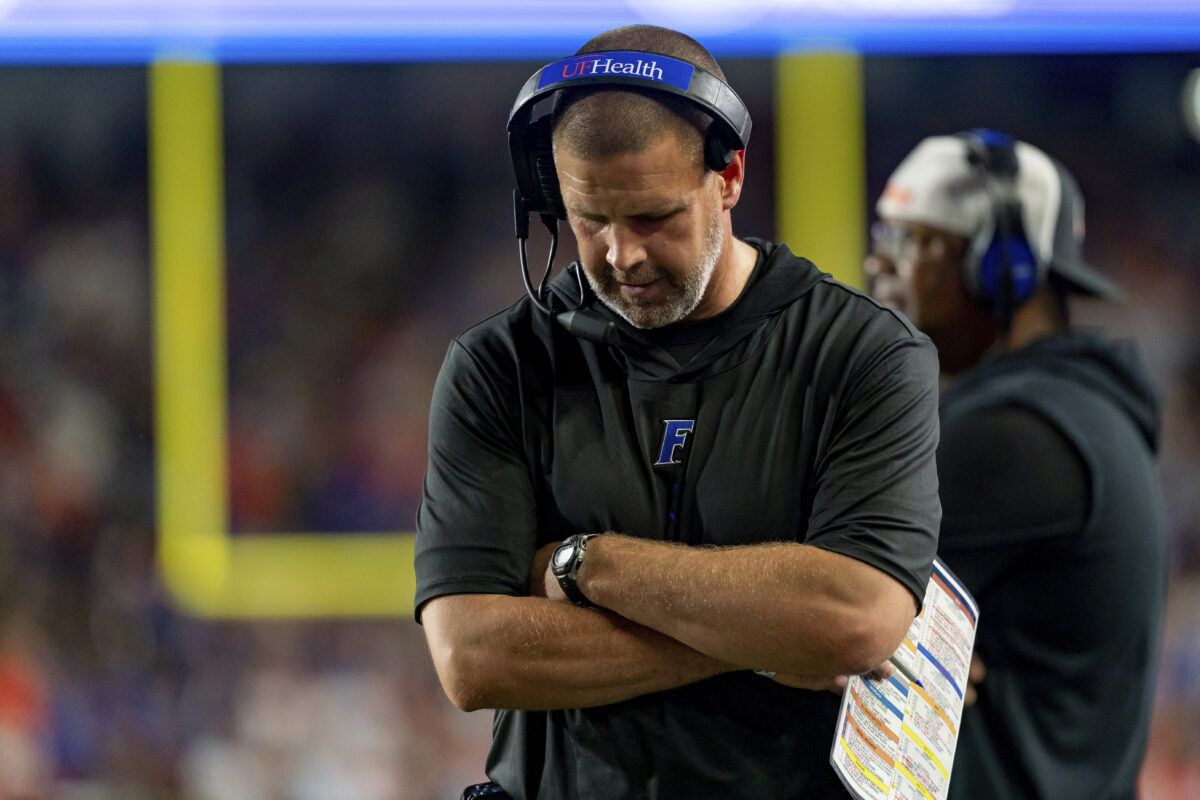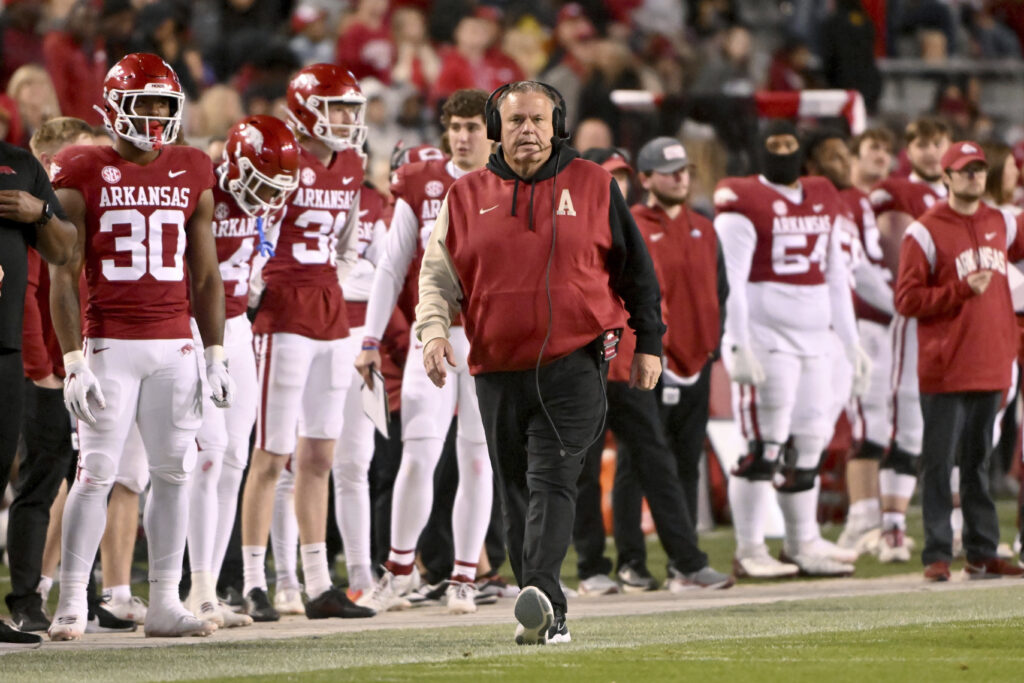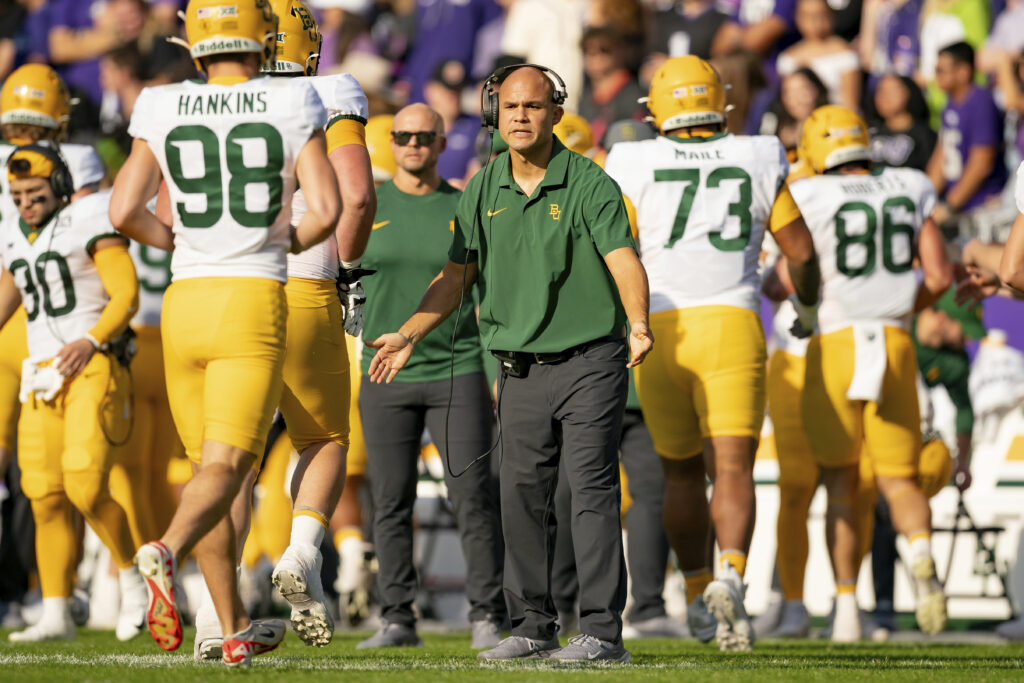Blog Article
The Coaching Carousel: A Wild Ride of Buyouts, Bargains, and Burnt Biscuits
Hefty Buyouts Await 4 of Our Top 5
Let’s go on a whirlwind tour of the college football coaching carousel, where the stakes are high, the contracts are crazy, and the pressure is hotter than a two-dollar pistol. We’re talkin’ buyouts that could make your head spin, fan bases ready to revolt, and coaches clinging to their jobs like a possum to a persimmon tree.
First Stop: Gainesville, Florida
Picture this: The Swamp, home of the Florida Gators, where the humidity rivals the pressure to win, and the athletic department operates like it’s stuck in a time warp. We’re talkin’ Windows 95 computers, flip phones, and a fax machine that’s practically considered cutting-edge technology.
Now, enter Billy Napier, stage left, with a seven-year, $50 million contract and a dream to restore the Gators to their former glory. The problem is that dreams don’t always translate to touchdowns, especially when you’re battling more than just your opponents.
Napier, bless his heart, he’s got the pedigree. Came down from Louisiana with a winning record, a folksy charm, and a playbook thicker than a Faulkner novel. But the SEC? It’s a different animal. It’s where good coaches go to get chewed up and spit out, their reputations left to bake on the asphalt like a forgotten lovebug.
And right now, Napier’s feeling the heat. His record? A less-than-stellar 13-16 (.448) The boosters? They’re restless, pacing the sidelines like caged panthers, their wallets bulging with buyout money. We’re talking $27.7 million to show Napier the door. That’s enough to buy every player on the roster a personalized yacht with a Gatorade fountain on deck and maybe even upgrade the athletic department’s internet to broadband while they’re at it.
But here’s the catch: even if they send Napier packing with a golden parachute, it won’t fix the root of the problem. This isn’t just about the coach, folks. It’s about a whole system that’s stuck in the dark ages. It’s about an athletic department that’s more concerned with balancing the budget on an abacus than building a winning program.
So, what’s the play? Do the Gators cut their losses and write a check that’d make your eyes water? Or do they finally face the music and realize that a complete overhaul is needed, from the coaching staff to the IT department? Because in the SEC, honey, there’s no middle ground. You either evolve or get left behind, fossilized like a prehistoric gator in the swamp of mediocrity.
Next Up: Waco, Texas
Now, let’s move on over to Waco, Texas, where the Baylor Bears are facing a dilemma of biblical proportions. Their head coach, Dave Aranda, is a man of few words and even fewer wins lately. Remember that magical 2021 season? Big 12 champs, Sugar Bowl victors, the whole nine yards? Since then, it’s been more like “the whole nine losses,” and the fans are starting to sound like a swarm of angry bees.
Aranda, see, he’s a defensive mastermind. The kind of guy who can draw up a blitz package that’d make your head spin faster than a Texas tornado. But lately, his offense has been about as exciting as watching paint dry in the Waco sun. And those wins? Well, they’ve been harder to come by than a parking spot at the Silos on a Saturday afternoon. It is so hard to come by that the once-packed McLane Stadium is starting to look like a ghost town.
Now, here’s where it gets interesting. As a private institution, Baylor keeps its finances tighter than a drum. So, we don’t know the exact details of Aranda’s contract. But rumor has it, his buyout is a cool $20 million. That’s enough to buy a lifetime supply of Dr Pepper for every student on campus and still have enough left over to build a replica of the Alamo… with heated seats.
But here’s the thing: it’s not just about the money. The Baylor faithful are losing their patience. They’re tired of watching their beloved Bears get mauled week after week. The grumbling in the stands has turned into a full-blown roar, and the pitchforks are practically at the door of Aranda’s office.
So, the question is: do the Bears bite the bullet and pay Aranda a king’s ransom to walk away? Or do they stick with him, hoping he can rediscover that 2021 magic and silence the angry mob? It’s a tough call, folks. Aranda’s a good guy and a solid coach. But in the cutthroat world of college football, nice guys often finish last… and get handed a hefty severance package on their way out the door, accompanied by the boos of a disgruntled fanbase.
The pressure’s on in Waco. Will the Bears double down on Aranda or cut their losses? Only time will tell. But one thing’s for sure: this is one expensive game of Texas Hold’em, and Baylor’s holding a pair of deuces with a fanbase threatening to burn the whole casino down.
Rolling into Fayetteville
Next, we’re headed to Fayetteville, Arkansas, where the Razorbacks are wrestling with a problem that’s stranger than a hog in a tuxedo. Their head coach, Sam Pittman, is a good ol’ boy with a heart of gold and a drawl thicker than molasses. He would invite you over for a barbecue, regale you with stories about his playing days, and then send you home with a Tupperware full of leftovers. But right now, those leftovers might be all he’s got left to give.
See, Pittman’s currently sitting at a 26-27 record (.491), which is about as comfortable as a pair of overalls in a sauna. And that record has got the whole state of Arkansas sweating bullets because it’s tied to this “goofy” buyout clause in his contract that’s got everyone scratching their heads. If the Razorbacks decide to give him the boot, the amount they owe him depends on whether that record tips above or below .500. Above? A cool $12.15 million. Below? A slightly less cool $8.1 million. It’s like a bizarre game show where the prize is getting fired, and the consolation prize is still a mountain of cash.
Now, Pittman started strong. In 2021, he had the Hogs squealing with delight, leading them to a 9-4 season and a Top 25 finish. But lately? The wheels have come off the tractor, and the Razorbacks are wallowing in mediocrity. They’re teetering on that .500 mark, like a tightrope walker with a fear of heights and a hefty life insurance policy.
So, what’s a university to do? Do they pay Pittman $12 million to hit the road, or do they gamble on him turning things around and potentially saving themselves a few million bucks? It’s a high-stakes poker game, folks, and the pot is sweetened with a side of Southern-fried absurdity.
The pressure’s on in Fayetteville. Will the Razorbacks ante up and send Pittman packing with a golden handshake? Or will they hold their cards and hope for a winning hand? Only time will tell. But one thing’s for sure: this is one wild ride, and the only thing crazier than the buyout clause is that we’re all glued to our seats, waiting to see how it all plays out.
Down South with the Golden Eagles
Now, let’s dive headfirst into the chaotic world of Southern Miss football, where the Golden Eagles are flapping their wings a little too close to the flames. Their head coach, Will Hall, is a man with a fiery spirit, a four-year contract ticking down faster than a Mississippi minute, and an offense sputtering like a lawnmower on its last legs.
Hall inked that deal in 2020, promising him a cool $800,000 yearly. Not bad, right? But here’s where it gets interesting: this is the FINAL ACT, folks. The last year of that contract. Which means that buyout everyone was sweating about? It’s practically evaporated faster than a puddle of sweat on a Hattiesburg sidewalk.
Instead of millions, we’re talkin’ chump change. A couple of hundred grand, maybe even less. Suddenly, those Golden Eagles administrators look like they have stumbled onto a Black Friday sale on coaches.
But here’s the twist: this isn’t an ordinary clearance rack. This is Will Hall, a coach with the passion of a thousand suns but a colder record than a Mississippi winter. Turnovers? They’re happening faster than you can say “To The Top!” Third-down conversions? They’re about as rare as winning lottery tickets in Hattiesburg.
And the fans? They’re restless. They’re tired of watching their beloved Eagles lay eggs on the field. The grumbling in the stands is reaching a fever pitch, and Hall’s seat is the only thing hotter than the Mississippi humidity. With each loss, that four-year contract isn’t just a ticking time bomb; it’s a firecracker about to explode in his face.
So, what’s the play? Do the Golden Eagles say, “Hey, for this price, might as well let him ride it out,” or do they decide a change is needed NOW, consequences be damned? It’s a high-stakes poker game with the whole program’s future on the line.
Hall’s gotta win and win BIG to save his job. The Golden Eagles must decide if they will gamble on a Hail Mary or if it’s time to cut their losses and start fresh. Either way, this final act will be one hell of a show.
The Sonny Cumbie Quandary: Louisiana Tech’s $1 Million Gamble (Or Is It a Million-Dollar Headache?)
Let’s sashay over to Ruston, Louisiana, where the Louisiana Tech Bulldogs face a stickier predicament than a bowl of gumbo gone wrong. Their head coach, Sonny Cumbie, is a young gun with a five-year contract that, on paper, seemed like a steal. But with the Bulldogs barking up the wrong tree lately, that contract’s starting to look more like a financial albatross.
Cumbie signed on the dotted line back in 2021, agreeing to a $4.85 million deal that would pay him a cool $1 million in 2024. It’s not a bad payday for a coach trying to make his mark in college football. But here’s where it gets interesting: if Louisiana Tech decides to give him the boot, they’re on the hook for 75% of that remaining salary.
You might be thinking, “75% of a million bucks? That’s a hefty chunk of change!” And you’d be right. But here’s the twist: that million dollars is spread out over the remaining years of his contract, which runs through January 2027. So, we’re not talking about a single lump sum payment that’d break the bank. It’s more like a series of installments on a slightly overpriced used pickup truck.
But here’s the real kicker: Cumbie’s got this contract loaded with incentives. Win the Conference USA championship? Bonus cash! Lead the Bulldogs to a bowl game? More money! Boost the team’s GPA? Cha-ching! It’s like a college football version of “Who Wants to Be a Millionaire,” except the lifelines are touchdowns, and academic probation is the equivalent of losing all your money.
So, the question is: do the Bulldogs cut their losses and pay Cumbie a modest sum to walk away? Or do they stick with him, hoping he can turn things around and cash in on those sweet incentives? It’s a gamble, folks. Cumbie’s got potential, but potential doesn’t always translate to wins on the scoreboard.
The pressure’s on in Ruston. Will the Bulldogs roll the dice on Cumbie and hope for a winning hand? Or will they fold and start fresh with a new coach and strategy?



